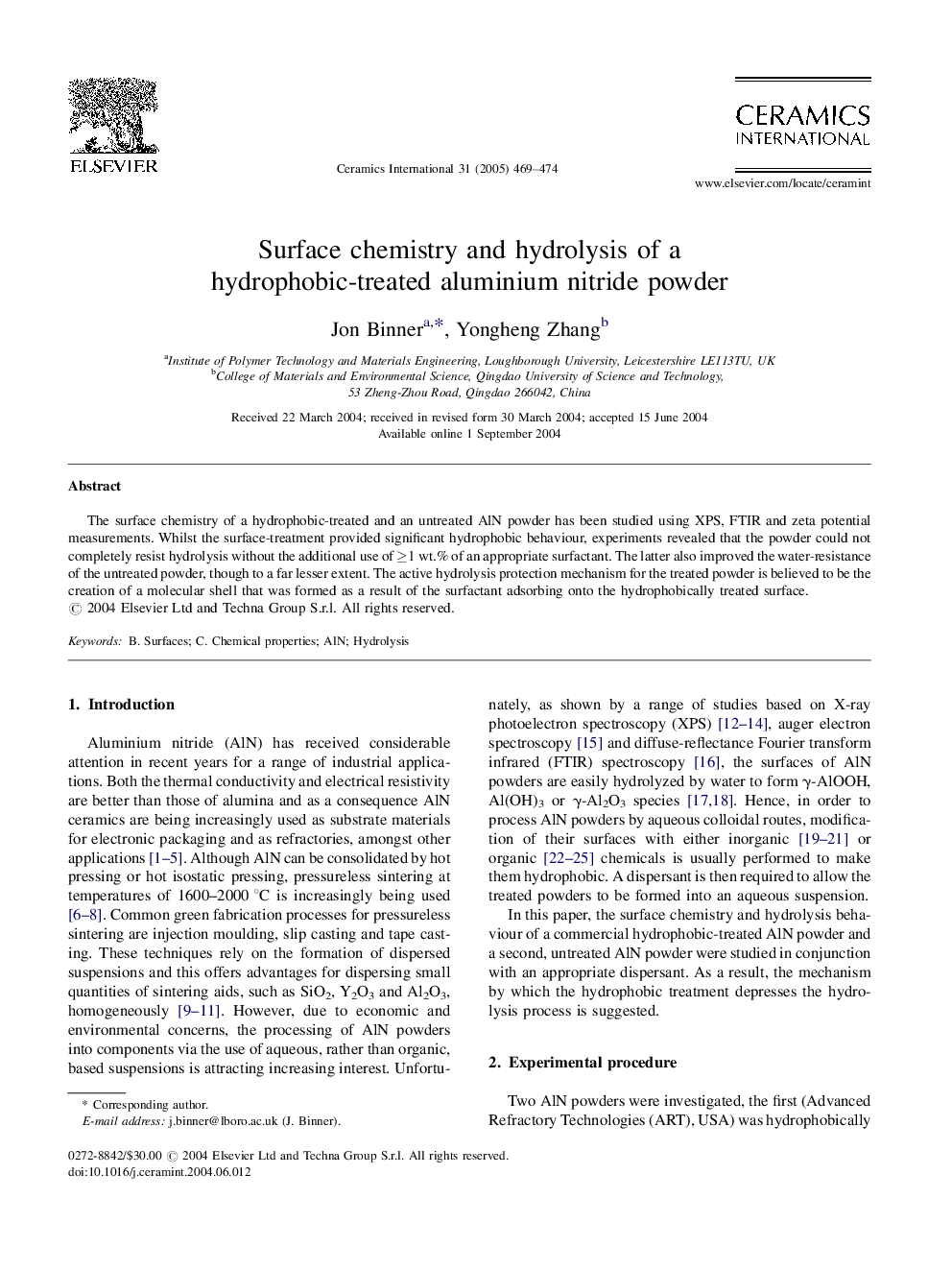| Article ID | Journal | Published Year | Pages | File Type |
|---|---|---|---|---|
| 10626550 | Ceramics International | 2005 | 6 Pages |
Abstract
The surface chemistry of a hydrophobic-treated and an untreated AlN powder has been studied using XPS, FTIR and zeta potential measurements. Whilst the surface-treatment provided significant hydrophobic behaviour, experiments revealed that the powder could not completely resist hydrolysis without the additional use of â¥1 wt.% of an appropriate surfactant. The latter also improved the water-resistance of the untreated powder, though to a far lesser extent. The active hydrolysis protection mechanism for the treated powder is believed to be the creation of a molecular shell that was formed as a result of the surfactant adsorbing onto the hydrophobically treated surface.
Related Topics
Physical Sciences and Engineering
Materials Science
Ceramics and Composites
Authors
Jon Binner, Yongheng Zhang,
